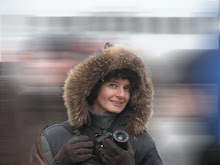Genealogy Blogger Anita Wills Interviews Nancy Gershman about "Ancestor Photo-Ops"
Anita Wills, host of “Anita Talks Genealogy”, interviewed me about my Ancestor Dreamscape work on April 11, 2011 from her California studio. Wills, the author of two books Pieces of the Quilt: The Mosaic of An African-American Family, and Notes and Documents of Free Persons of Color is a specialist in African-American and Native American genealogy research.
Listen to the mp3 of our interview (fast forward to 07:23)
She has a special interest in Ancestor Dreamscapes because she believes there is a spiritual connection when you see a resemblance between yourself and your ancestors. “Otherwise,” says Wills, “it’s just an oral history.” In addition to sharing innumerable tips on backing up one’s genealogy research, Wills expressed particular excitement about the benefits of creating a “photo-op” with one’s ancestors. Digitally, that is. This morning she shared her innermost thoughts with me about what an Ancestor Dreamscape would mean to her personally.
“Putting the memories from past and present together, a step I never thought about - – this was an eye-opener for me. I never thought about taking a picture of myself and super-imposing it on a photograph of my ancestors. I have pictures from the past, but this would be just like being there. I often go to Chestnut County, Pennsylvania where my great grandfather Samuel Ruth and his mother Leah Warner lived, and I can see doing an Ancestor Dreamscape where I stand there, with them. The Ancestor Dreamscape then becomes ”the” picture I have of Samuel and his mother and me! I can already see them there in my mind with me. My people, who walked here and lived here. My great grandfather was a white man who descended from a German father and an African mother. That father had a farm and two or three slaves. But Samuel chose to carry the Ruth name.
I have pictures they took in the area back then in the 1800s. It’s a rural area, full of Dutch farms and part of the Underground Railroad. Never thought of putting myself in the picture before. But when somebody says, you look a lot like your grandmother – it would be amazing to see my great great grandmother’s picture and my picture together. It would really show how we do look alike.
It would be spiritual for me.”
Heritage or “Roots” travel
Anita acknowledged that she was looking recently for a travel agent who could take her back to Guinea where her great great grandmother lived. She found out what tribe Leah was from –part of the Keita and Camray tribe that came in from Mali to Guinea, around the 1300s. Here are some suggestions I gave Anita for fulfilling her dream, which I will share with you now.
To arrange a heritage travel group vacation, contact Adam Glenn, President of Family Roots Travel at (800) 264-2895 or email him at a.glenn@familyrootstravel.com.
Before you go on a heritage vacation, think about setting up a variety of shots:
- Pose in the exact spot depicted in your family’s archival photos
- Wear authentic clothing from that time period
- Hold meaningful objects passed down to you from these very distant ancestors
- Pose in front of your ancestral home, or even on the street outside where your ancestors once lived
- Pose with living relatives residing in or near your ancestral home
When you return from your trip, tell me your vision for an Ancestral Dreamscape and I will work with scanned versions of your vintage photos and the heritage vacation photos I collect from you digitally.
The final deliverable?
· Restoring and retouching at no extra cost, unless your photos are severely damaged
· High resolution scans of all your photos, at no extra charge
· High quality 8x10 glossy print of your artwork plus all files on a CD (Enlargements ordered separately)
· Affordable pricing and installment payment plans so anyone can afford a custom photomontage. (Every photo used, whether yours or Nancy’s, is just $40/image)
· USPS Priority Mail shipping, always free with your order!
To commission an Ancestor Dreamscape, contact Nancy Gershman at 773-255-4677 or email me at nancy@ArtForYourSake.com. Projects are taken on a first-come-first-served basis.
Be sure to tune into the next segment of Anita Will’s Blog Talk Radio show “Anita Talks Genealogy” Wednesdays 7:00- 7:45 pm, and Fridays, 7:00-7:45 pm PST.



